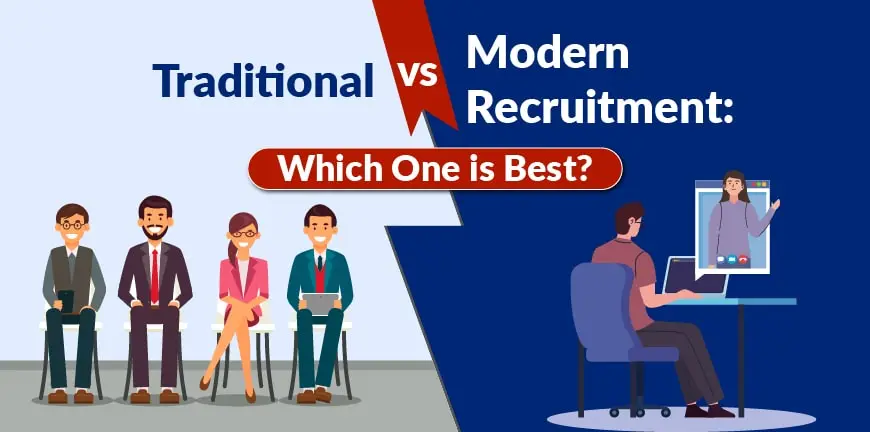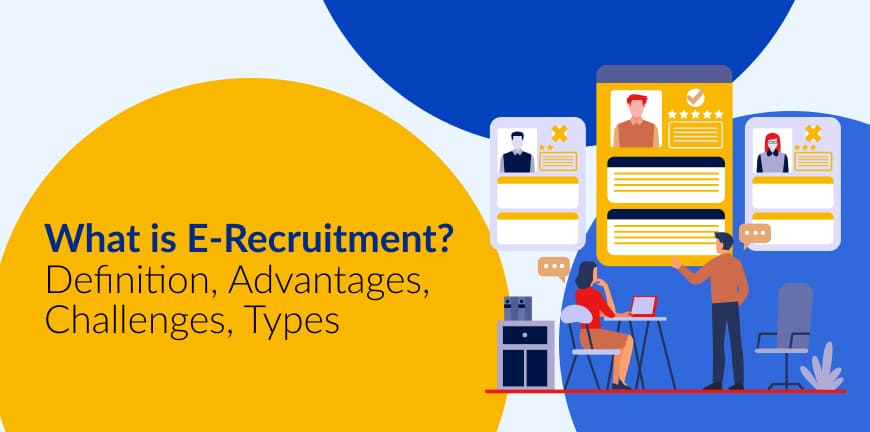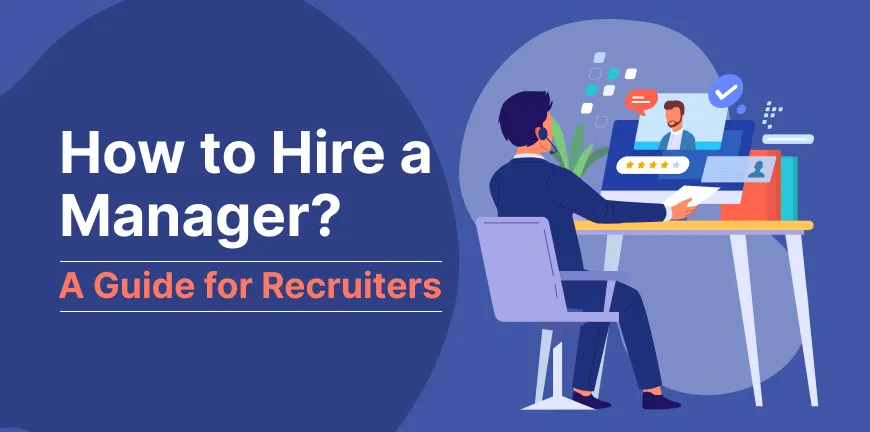
10 Benefits of Hiring a Virtual Employee
14/11/2025
Top 7 Emerging Technologies Powering the Next-Gen GCCs
14/11/2025- What is Traditional Recruitment?
- What are the Top 6 Traditional Recruitment Methods?
- What are the Advantages of Traditional Recruitment?
- What is Modern Recruitment?
- What are the Modern Recruitment Techniques?
- Traditional Recruitment vs Modern Recruitment method- Which is better?
- Features of Traditional Recruitment Vs Modern Recruitment
- When to choose traditional recruitment?
- When to opt for modern recruitment?
- Frequently Asked Questions
Finding talent is a constant struggle for all organizations alike. With the job market evolving by the day, the feat to find the right individuals for your workforce is only getting more and more challenging. Modifying your recruitment approach and shifting from traditional methods to modern, technology-driven approaches could be the solution to the problem. While there has been debate about how traditional vs modern recruitment methods have been doing in the modern world, recruiters have been actively incorporating social media and adopting mobile-friendly recruitment platforms to leverage the benefits of modern recruitment.
What is Traditional Recruitment?
The traditional recruitment approach refers to the conventional methods and processes that have been in action for many years across our country for decades to recruit and hire employees. There are several traditional techniques of recruitment that have been around for centuries. So, what are the traditional recruitment methods?
What are the Top 6 Traditional Recruitment Methods?
1. Advertisement on paper
Job openings are posted in newspapers or put up on job boards to increase visibility of the job opening and reach a wider pool of candidates.
2. Employee referrals
Candidate recommendations provided by the already existing employees are used to fill the open positions in the organization.
3. Employment agencies
Job openings are posted in local employment offices to reach a wider pool of candidates.
4. Third-party recruitment agencies
External temp agencies are hired by organisations to help find and shortlist candidates for their open positions.
5. Conduct interviews in-person
Potential candidates are called to the organisation’s offices or to a neutral location to conduct in-person interviews with hiring managers or a panel of interviewers.
6. Background checks and references
Contacting candidates’ references, such as past supervisors or colleagues, to get more information on their work history and performance.
What are the Advantages of Traditional Recruitment?
1. Comfort zone
These methods are straightforward and have been well established for many years. So, this method is well within the comfort zone of employers and candidates.
2. Connect on a personal level
In traditional recruitment, with in-person interviews and other assessment methods, employers get a first-hand sense and understanding of the candidate’s personality and fit for the organisation.
3. Well-established and consistent
There are established processes and protocols in place in traditional recruitment methods that ensure fairness and consistency in the recruitment process.
What is Modern Recruitment?
Modern recruitment refers to using modern techniques and strategies to find and hire the best talent in the job market. By leveraging technology and other creative and innovative approaches, it’s easier to streamline the hiring process, improve efficiency, and enhance the candidate experience.
What are the Modern Recruitment Techniques?
1. Artificial intelligence technology
With AI, organizations can streamline the hiring process by automating tasks like screening, setting up interviews, and matching candidates with the right job openings. It also helps identify the best candidates by analysing their skills and experience.
2. Social media platforms
Making use of LinkedIn, Facebook, and Twitter to post job openings and engage with potential candidates. Not only does this help build your employer brand, but it also reaches candidates from across the globe and even taps into passive candidates.
3. Applicant tracking systems (ATS)
The ATS helps filter and manage the many job applications that pour in. This not only saves the recruiters’ time but also helps find the most suitable candidates.
4. Virtual interviews
Thanks to VR technology, candidates can attend interviews virtually and interact with the company remotely, offering a more immersive experience for remote employees.
5. Boomerang Employees
This strategy involves rehiring former employees who left on good terms. This method can be effective as these employees already know the company culture and are likely to fit in easily.
6. Internal recruitment
Instead of always depending on recruiting from outside, here you can promote candidates within the organisation to other roles, depending on their specific skills. This is not only cheaper, but also reliable and shows the company’s dedication to the growth of employees.
7. Employer branding
This method involves creating a strong employer brand to attract top talent. It involves showcasing the company culture, values, and benefits to potential candidates.
Traditional Recruitment vs Modern Recruitment method- Which is better?
To understand which is better between traditional and modern methods of recruitment, you must explore various factors, including the specific needs of the organization, the nature of the job market, and the job roles that need to be filled.
Here is a comparison that lists the features of traditional and modern sources of recruitment:
Features of Traditional Recruitment Vs Modern Recruitment
| Aspects | Traditional Hiring | Modern Hiring |
| Process | Paper-based resumes are perused by the recruiter, followed by in-person interviews and reference checks | Jobs are posted on Online job boards and social media, followed by video interviews, and AI guided screening process |
| Reach | Access to local talent only, and in-person interviews are conducted, offering a personal touch | Can access a larger pool of talent beyond borders, as interviews can be taken virtually, allowing candidates to be at ease. |
| Efficiency | The recruiter performs all tasks like screening, matching profiles, etc., manually, which can be less efficient. | The entire hiring process is streamlined through automation and technology, where certain tasks are automated. |
| Candidate Assessment | Focused on personal interaction, communication skills, and cultural fit | With Data-driven insights, the candidate assessments are more thorough and better at filtering out candidates. |
| Key Advantage | Personal touch: Face-to-face interactions allow for better | Wider reach and efficiency: Ability to access a global talent pool and streamline the process through technology |
| Suitable For | Industries or roles that prioritize personal interaction and cultural fit | Companies seeking a larger talent pool and a more efficient hiring process |
| Potential Risks | Missing out on talent from beyond borders or due to unconscious bias that exists during the hiring process | Perpetuating existing biases through AI tools, overlooking interpersonal skills |
When to choose traditional recruitment?
As established in the above table, there are certain differences between traditional recruitment and modern recruitment methods. Here’s when you should choose traditional recruitment-
- If you are a small, local business, this method would work as you would want to hire local talent and wouldn’t want any extensive recruiting services.
- If the roles you are hiring for require higher levels of personal interaction or customer service, then face-to-face interviews could be the best way to go about it.
When to opt for modern recruitment?
Modern recruitment hinges more towards using modern technology to source, screen, and hire candidates. Here’s when you should opt for modern recruitment:
- If your company has many positions to fill in a short period of time, then this mode of recruitment would serve your purpose.
- If you are looking for individuals with specialized technical skillsets to work in innovative fields, then they are likely to engage with digital platforms, which is one of the ways modern recruitment methods use to post jobs.
- If you are looking to attract candidates not just locally but also beyond borders, this mode could benefit you as you can reach a broader audience through online platforms and social media.
The right approach could also be a hybrid model approach that combines both traditional and modern methods of recruitment.
For example,
- You can use employee referrals of the traditional recruitment approach, but on the other hand, manage them by using an online platform to ensure efficiency.
- You can start by conducting initial screenings by using video interviews, which saves time, but by the end of it, if you think the candidate is quite suitable, you may conduct in-person interviews with them.
- You can post job ads in local newspapers (traditional) and on online job boards (modern) to maximize reach.
Given the dynamic job market, it’s important to know and understand how traditional vs modern recruitment fair in the new business landscape as each of them offers unique benefits and challenges, making it essential to find the right balance to attract and retain top talent. Businesses must figure out their hiring needs by evaluating their company’s culture, values etc and land on the right method of recruitment. Of course, the most effective way is deemed to be the hybrid approach, where organizations can reap the benefits of both methods of recruitment and acquire the best talent.
Frequently Asked Questions
1. What are the two types of recruitment?
There are mainly 2 types of recruitment– internal and external recruitment. The former refers to the process of filling job vacancies with current employees by promoting them to different roles within the organisation, while the latter refers to hiring new employees from outside the organisation.
2. What is the difference between traditional HR and modern HR?
The key difference between traditional and modern HRM (human resources management) is that traditional HR management focuses on talent acquisition and onboarding, while contemporary HRM practices focus on enabling your employees throughout their entire time with you.
3. Which is better recruiter or HR?
Both play important roles in attracting and retaining talent. The recruiter helps to attract the best talent to your company, while HR sees to the development of the employees and makes sure that the company retains them. These two overlap in some ways, but they are different and should be treated as such. This implies that you need both of them, ordinarily.
4. What is the best source of recruitment in 2025?
Some of the best sources of recruitment in 2025 are Internal talent, Employee referrals, Past employees, Job boards and websites, Placement drives, Job fairs, social media platforms, Media promotions, and more.
5. What are the advantages of a distributed workforce?
Benefits of a distributed workforce model include access to a broader talent pool, reduced overhead costs, increased flexibility for employees, improved work-life balance, and the ability to adapt to changing business needs and market dynamics.
Contact Us For Business Enquiry

Amit Saproo
Amit Saproo is the Head of Operations at ALP Consulting with nearly 17 years of experience in Executive Search, RPO, Leadership, and IT & Engineering recruitment. He leads nationwide recruitment programs across Technology, BFSI, and R&D domains, driving strategic hiring solutions for diverse client needs. Amit excels in building and managing high-performance teams that deliver scalable, end-to-end recruitment and consulting services.




